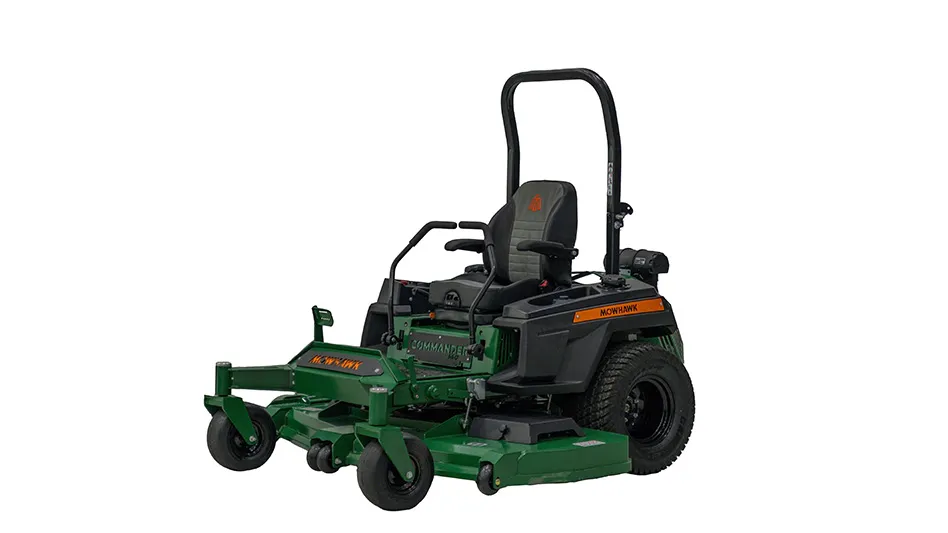
 Ken Silvers’ lawn care operation consists of himself and a couple of part-time helpers, so most of the daily tasks fall on his shoulders.
Ken Silvers’ lawn care operation consists of himself and a couple of part-time helpers, so most of the daily tasks fall on his shoulders.
“I do the work of two to three people every day,” says Silvers, owner of Ken Silvers Residential Lawn Care in Findlay, Ohio.
He has little by way of backup equipment or manpower to fill a gap if something goes awry on a job site, so he considers it especially important to do what he can to keep his equipment running smoothly.
Preventive maintenance practices might have gotten cut short this year for Silvers and many other lawn care operators because of the unseasonably warm winter and spring, prompting earlier customer calls. But even with the chaos of the season being in full-swing, contractors should remember to keep their spreaders and sprayers well maintained to avoid problems in the field.
Spreaders
What to do now. Silvers and other lawn care operators make it a point to clean out fertilizer spreaders every day to prevent a number of problems that could lead to uneven applications or equipment breakdowns.
Graham Oldreive, owner of Ducke’s Lawn Care Services in Dartmouth, Nova Scotia, says regular cleaning can have a huge impact on a spreader’s lifespan and effectiveness.
“I found that if you leave the fertilizer in there (between jobs), parts corrode, and then the spreader is basically garbage,” he says.
Silvers estimates that when he makes 20 applications a day, he blows out the spreader with a leaf blower two to three times a day. He notes that it’s important to stand back and wear protective eye gear when blowing the spreader to guard against flying fertilizer pellets.
Harold Fox, owner of Town Pride Lawn Service in Medford, N.J., says crews regularly clean out their spreaders, though usually not in the middle of a work day, unless it rains and the product gets wet.
“I try to keep as much moisture away from the fertilizer grain as possible,” he says. Regular tune-ups are a key part of spreader longevity as well – especially the motorized models, Fox says.
He adds that tuning up the spreaders after each round of 50-100 hours of use will suffice, but to consult the equipment’s owner’s manual to be sure.
Usually at the end of the day and on Sundays, Oldreive performs routine maintenance on his spreaders to keep them running at their maximum efficiency level.
This can include greasing the axles, wheels and spinner, when needed. It’s also imperative to clean the air filter regularly, Fox adds.
“You’d be surprised how much pollen and fertilizerdust these things pull out of the air,” he says. “Even though you don’t see it, it’s there and when you clean the air filter, you know it’s there.”
Silvers also keeps assorted spare parts with him in his truck. If he has an equipment malfunction that is beyond his control, he’s got his bases covered.
He works with three different local mechanics, so there’s almost always one that’s close to his job site. If he needs equipment fixed in a pinch or has to pick up a spare part, it’s done quickly.
What to do later. After the season’s last round of fertilizer applications, store the clean spreaders in a dry place.
“When you store the spreader in a damp area without cleaning it out, the materials can eat through the steel,” Silvers says.
Oldreive applies a coat of rust-inhibiting lubricant to the moving parts to make next year’s startup easier.
Fox finds that films or coatings used to maintain boats in saltwater environments also work well for guarding against the materials used in spreaders.
Sprayers
What to do now. At Town Pride Lawn Service, the employee who is using the equipment on any particular day is responsible for inspecting it before use, Fox says.
If the sprayer is motorized, maintenance guidelines similar to the motorized spreader apply – regularly change the sprayer’s oil, clean or replace the air filter, and oil any moving parts, Fox says.
Silvers cleans the nozzle screens on his backpack sprayers often to keep them from clogging. Likewise, he checks the T-jets in the motorized spreader to make sure they’re clean.
Fox doesn’t completely flush out the sprayer’s tank and hose during the season unless he’s switching the contents from a herbicide to a non-herbicide product for ornamentals.
This is rare though; he tries to keep dedicated sprayers for each material to avoid having the chemicals mix.
What to do later. In preparation for cold temperatures in the offseason, Fox and his crew empty the material out of the sprayer. They then pump just enough antifreeze to get all the way through the equipment and keep liquid from freezing.
When in doubt about best winter preparation practices, contractors can always consult the owner’s manual or trust their best guesses. “A lot of it is common sense,” Oldreive says.
The author is a freelance writer in Lakewood, Ohio.

Explore the July 2012 Issue
Check out more from this issue and find you next story to read.
Latest from Lawn & Landscape
- LandCare promotes Burnett to chief people officer
- David J. Frank Landscape celebrates 65th anniversary with groundbreaking
- Lawn & Landscape’s May issue is live
- The 2024 Top 100 List
- What do we stand for?
- SiteOne partners with FMC
- GreenCare for Troops announces You Move, We Mow Challenge
- Culture shift





